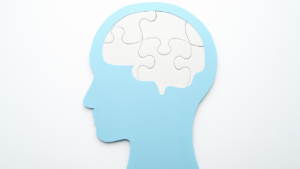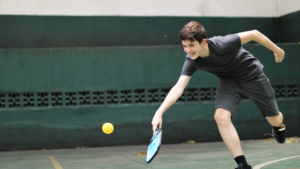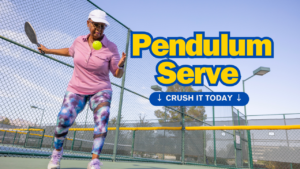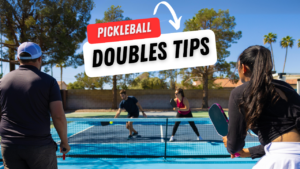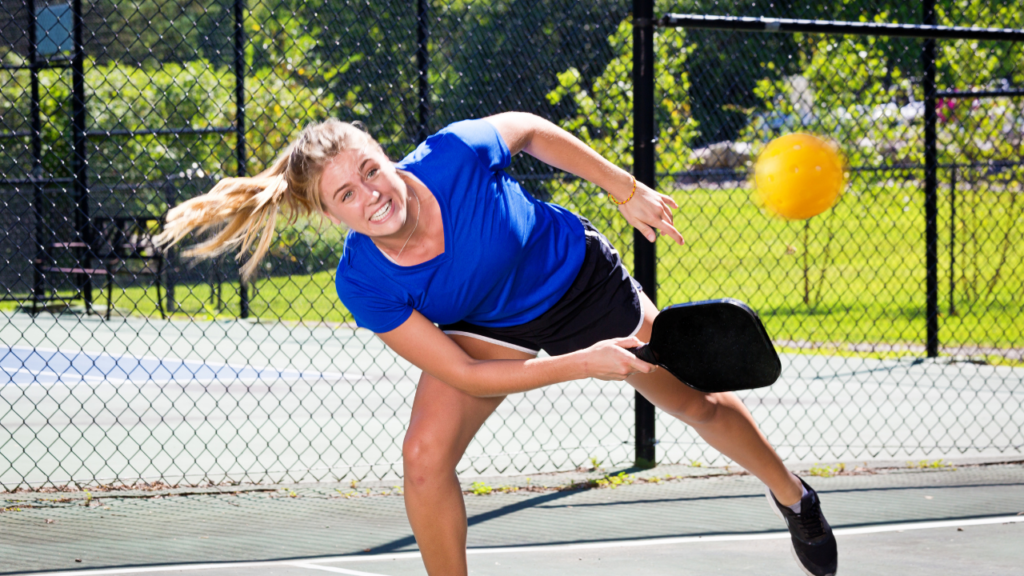
Playing pickleball can be a blast, but many players trip over common pickleball mistakes. Newbies often focus on power instead of precision. They forget to position themselves correctly and miss easy shots. On the flip side, seasoned players sometimes get too comfortable and overlook basic techniques.
These errors can cost you points and ruin your fun. Understanding these pitfalls is key to improving your game. This post will highlight the most frequent mistakes players make and how to avoid them. You’ll learn tips that can elevate your skills and boost your confidence on the court. Say goodbye to frustration and hello to better gameplay!
Table of Contents
Key Takeaways
- Focus on your footwork; practice moving correctly to improve your game and avoid mistakes.
- Work on your serving techniques to ensure you start each point strong and gain an advantage.
- Always respect the no-volley zone; it can help you play smarter and avoid unnecessary faults.
- Use a mix of power and control in your shots; balance is key to keeping your opponent guessing.
- Communicate clearly with your partner in doubles; good teamwork can lead to better plays.
- Always warm up before playing and cool down afterward; this helps prevent injuries and keeps you in top shape.
Incorrect Footwork
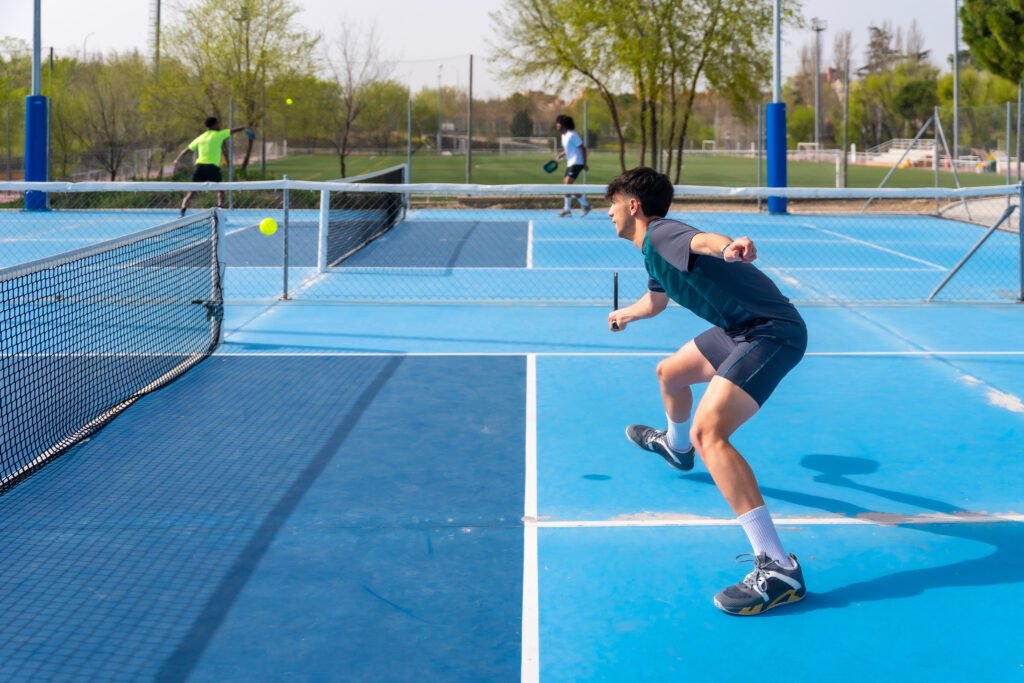
Master Fundamentals
Footwork is the base of pickleball. It helps players move quickly and stay balanced. Mastering the fundamentals of footwork is key to improving agility on the court. Players should focus on their stance and how they move their feet. Good footwork allows for better reactions during the game.
Small, quick movements are more effective than big leaps. When you take larger strides, you can lose your balance. Quick steps help you adjust faster to where the ball is going. This way, you can reach the right spot in time to make a play.
Adjust Your Stance
Players must adjust their stance based on the ball’s trajectory. If the ball comes high, bending your knees helps maintain balance. This position prepares you for unexpected dinks from your opponent. A stable stance allows for better swings and finesse in shots.
Lunges are also important in pickleball. They let you reach balls that are farther away without losing your footing. Practice lunges by pushing off with one foot while keeping the other grounded. This will help you get into position quickly.
Common Mistakes
Many players make common mistakes with their footwork. Some forget to keep their feet moving during rallies. Standing still makes it hard to react quickly. Others might kick their butt when they try to run, which slows them down.
High knees are another issue for some players. While it’s good to lift your knees, doing it too much can throw off balance. Instead, keep your feet close to the ground and focus on quick movements.
Big Blunders
Big blunders happen when players don’t pay attention to their foot placement. Not being aware of where your feet are can lead to missed shots or bad swings. Ensure that your feet are always positioned correctly for every shot.
Practicing these skills will reduce mistakes and improve overall gameplay. Focus on staying light on your feet and ready to move in any direction.
Poor Serving Techniques
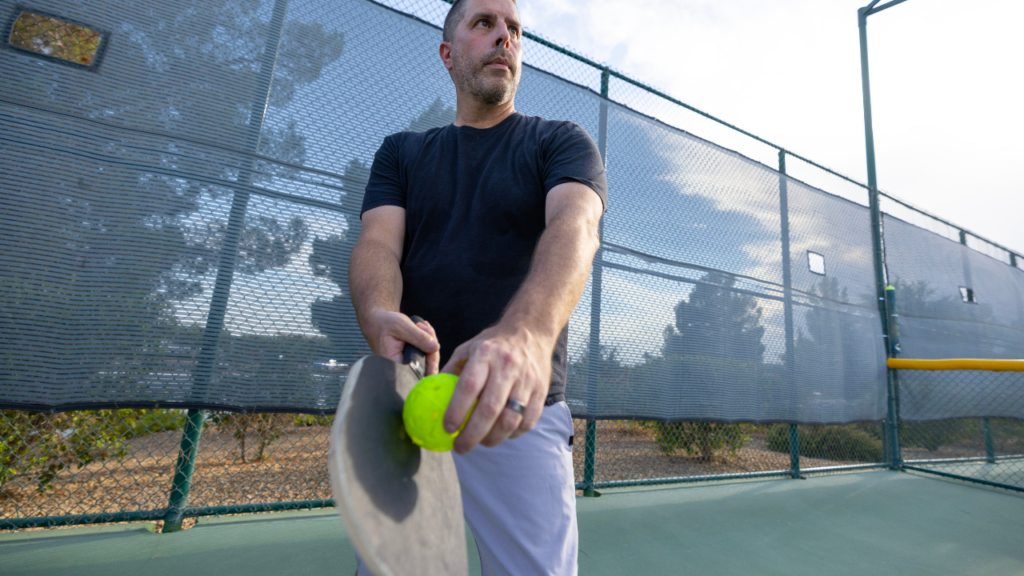
Serve Follow-Through
Players often forget the importance of a complete follow-through on their serve. A strong finish helps ensure that the ball goes where intended. This technique is a great way to improve accuracy. Without proper follow-through, players may hit the ball too high or too low. This can lead to missed serves and lost points.
To practice this, focus on your arm movement. Swing your racket fully after hitting the ball. This helps with both power and precision. Remember, every part of the serve counts. The follow-through is as important as the initial hit.
Consistency Over Power
Many players think they need to serve with all their strength. However, this can lead to mistakes. Instead, focus on consistency and placement. Hitting the ball hard does not guarantee success. A well-placed serve can be more effective than a powerful one.
Try aiming for different areas of the service box. This keeps your opponent guessing. Use soft serves sometimes to mix things up. This can confuse opponents and lead to easy points.
Experiment with Serve Types
Different types of serves can give players an edge in games. Players should experiment with various serving techniques. Each kind has its own advantages. For example, a topspin serve bounces higher, making it hard for opponents to return.
Another option is the slice serve, which curves away from the opponent. This creates angles that are difficult to handle. Mixing up serves makes it harder for opponents to predict your moves.
Here are some types of serves to try:
- Topspin serve
- Slice serve
- Flat serve
- Underhand serve
Using these different techniques can keep matches exciting and unpredictable.
Importance of Communication
Poor communication among teammates can also impact serving techniques. Players must understand each other’s styles and preferences during games. Discussing strategies before matches helps everyone stay on the same page.
For example, if one player prefers aggressive serves, let them know when it’s their turn to play aggressively. Good communication ensures that everyone plays their best.
Neglecting the No-Volley Zone
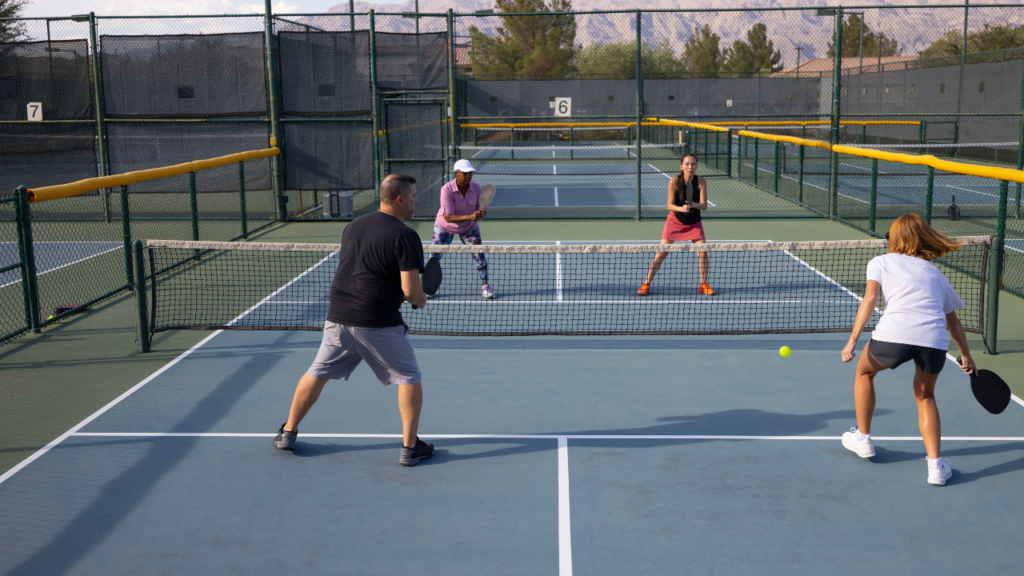
Understanding Rules
Players must know the rules of the no-volley zone. This area, often called the “kitchen,” is important in pickleball. Players cannot hit a volley while standing in this region. A volley means hitting the ball before it bounces. Stepping into the kitchen while trying to volley results in a fault.
Knowing when you can enter the kitchen is key. You can step into this area after the ball bounces. This rule helps keep the game fair and safe. It prevents players from dominating near the net.
Strategic Entry
Entering the kitchen can be smart. Players should do this carefully and at the right time. For example, if your opponent hits a weak shot, you might want to move forward. This allows you to take control of the game.
Anticipating where the ball will land is crucial. If you see your opponent preparing for a lob or a soft shot, get ready to move. Positioning yourself correctly helps you react better. You can then decide whether to stay back or move into the kitchen.
Anticipating Bounces
Using the no-volley zone effectively requires practice. Knowing how to anticipate ball bounces is essential. Watch how your opponent hits the ball. This gives clues about where it might go next.
For instance, if they hit a high shot, it may bounce near the net. Be ready to step into the kitchen after it bounces. You can then hit an effective return shot.
Another tip is to observe your opponent’s body language. Their stance and swing often indicate their next move. This helps you prepare for any quick changes in play.
Common Mistakes
Many players make mistakes regarding the no-volley zone. They might enter too early and commit faults often. Others may avoid using the kitchen altogether, missing out on strategic plays.
e players forget that they can use this area after a bounce. They hesitate and lose valuable points because of it. Practicing these skills can help avoid these common errors.
Benefits of Mastery
Mastering the no-volley zone has many benefits. It allows players to control the pace of the game better. They can dictate play by moving in and out of this area wisely.
Strong players often use this strategy to gain advantages over their opponents. Learning to navigate this mysterious region adds depth to gameplay.
Overusing Power in Shots
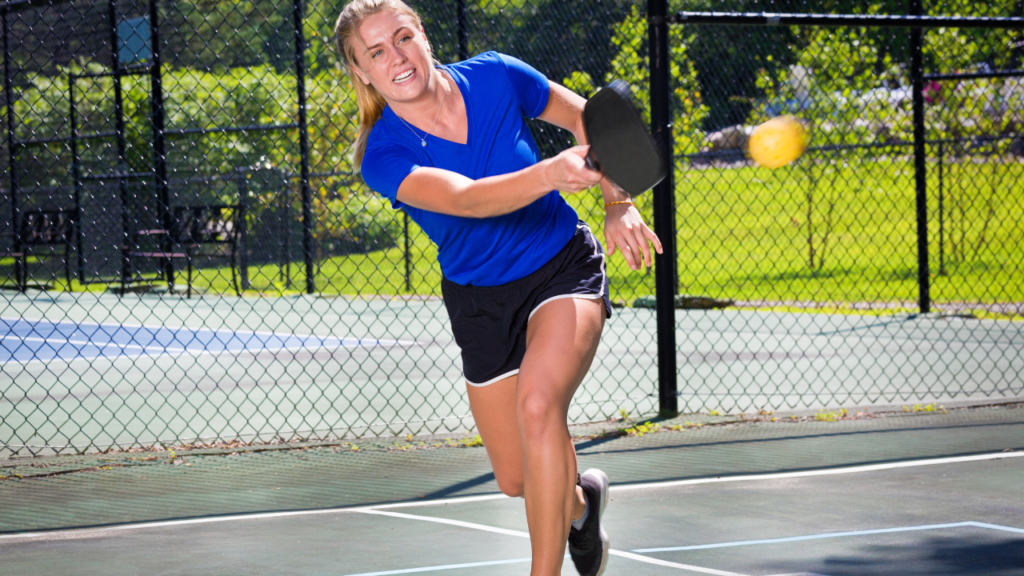
Power Balance
Players often focus on power shots. They believe hitting hard will win points. However, this can lead to mistakes. Balancing power with precision is key. A strong shot may not always be the best choice. Sometimes a softer shot can place the ball better.
Low drive shots can help control the game. These are powerful but also low and quick. They can catch opponents off guard. Players should practice these shots to improve their accuracy.
Touch Shots
Developing touch shots is important too. These are softer shots that require skill. They can surprise your opponent. A drop shot is a great example. It’s a tricky shot that lands just over the net. This forces the other player to rush forward.
Touch shots complement powerful strikes well. Using both types makes a player unpredictable. Mixing it up keeps opponents guessing. Players should practice these skills together.
Assessing Situations
Assessing the situation before hitting is crucial. Not every moment calls for a hard hit. Sometimes finesse wins the point. A player must read the game and adapt.
For example, if an opponent stands far back, a drop shot might work best. If they are close to the net, a power shot could be effective. Knowing when to use each type of shot improves overall play.
Avoiding Flashiness
e players want to show off with flashy paddles and big hits. This can lead to mistakes during important moments. Instead, focus on smart plays that fit your style.
A strong player knows their strengths and weaknesses. They use their ability wisely rather than relying solely on strength. This approach leads to better results in matches.
Winning Points
Winning points comes down to strategy, not just power. Players should aim for controlled shots that keep them in control of the game.
- Use different types of shots.
- Mix power with touch.
- Assess your opponent’s position.
- Stay calm under pressure.
Misjudging Ball Trajectory
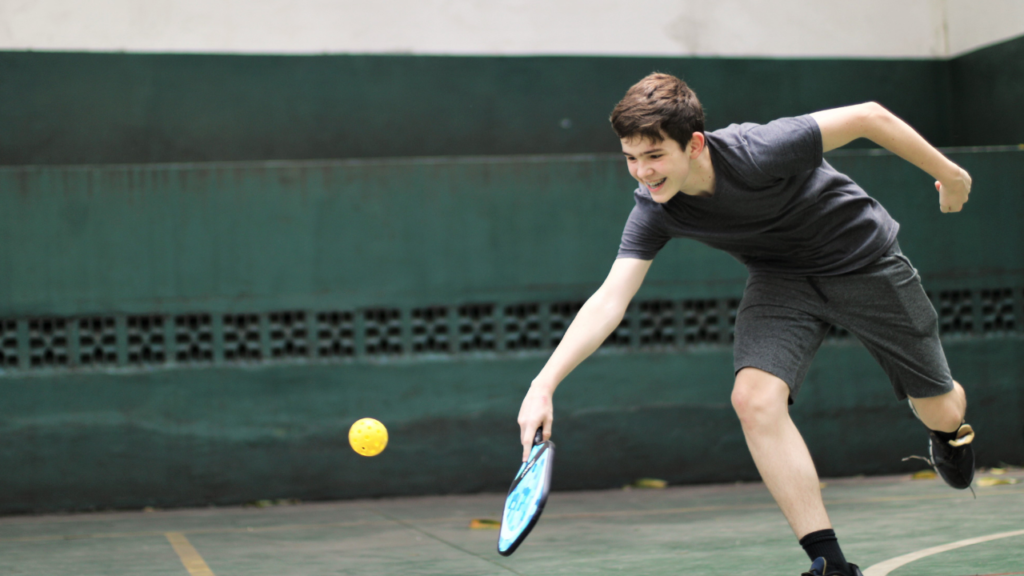
Ball Judgment
Players often struggle with ball judgment. This mistake happens when players misread the ball’s path. They may not notice the angle of their opponent’s paddle. Observing this angle can help predict where the ball will go.
Players should focus on the paddle’s position before the ball is hit. A downward angle means the ball will likely go lower. An upward angle suggests a high shot. Understanding these cues helps players position themselves better.
Ball Perception
Improving ball perception is key for success in pickleball. Players can practice tracking the ball from different angles. This helps them see how the ball moves through the air.
Practicing with partners can also enhance skills. Players should hit balls at varying speeds and directions. This builds confidence in reading the ball’s trajectory during games.
Pickleball Positioning
Correct pickleball positioning can make a big difference. Players should aim to meet the ball at its peak height. This gives them more control over their shots.
Standing too far back or too close can lead to missed opportunities. Players should find a comfortable distance from the net. Staying light on their feet helps them move into position quickly.
Pickleball Shots
Making effective pickleball shots requires good timing and placement. Players need to judge when to strike the ball accurately. Early hits can lead to mistakes, like hitting out of bounds.
Using a proper grip also influences shot quality. A loose grip allows for better feel and control during play. Practicing various shots will help players become more skillful.
Common Pickleball Blunders
Many players fall into common pickleball blunders due to poor judgment. Not anticipating where the ball will land leads to missed shots.
Players should learn to read their opponent’s body language as well. Watching their feet and shoulders can give clues about upcoming shots.
Serious Pickleball Wisdom
Gaining serious pickleball wisdom takes time and experience. Learning from mistakes is essential for growth in this sport.
Joining local clubs or groups can provide valuable feedback from other players. Engaging with experienced players helps build understanding of game strategies.
Communication Issues in Doubles
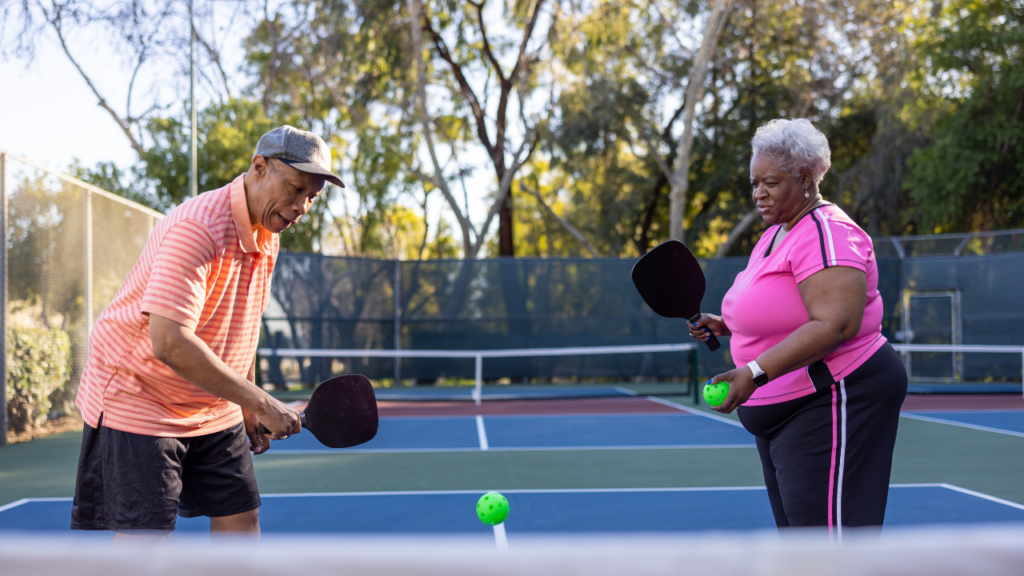
Clear Signals
Establishing clear signals with your partner is important. Use hand gestures or specific words to show your next move. This can help avoid communication blunders during matches. For example, one player can raise a hand to signal a “dink” shot while the other prepares for it.
When both players know the signals, they move together better. This teamwork leads to more successful plays. Clear signals also reduce confusion about who will hit the ball. The goal is to act as one unit on the court.
Loud Intentions
Calling out intentions is crucial in doubles play. Players should announce their moves loudly. Saying things like “Mine!” or “Yours!” helps everyone understand who will take the shot. This reduces mistakes and keeps the game flowing smoothly.
During fast-paced matches, communication becomes even more vital. A loud call can prevent collisions and missed opportunities. It’s essential to be clear and assertive with your voice. This way, partners know what to expect from each other.
Pre-Match Discussions
Discussing strategies before matches is a smart way to enhance teamwork. Players should talk about their strengths and weaknesses. Understanding each other’s skills helps create a solid game plan.
For example, if one partner excels at dinks, they can focus on that area during play. The other partner can cover different shots, like powerful serves or volleys. This division of roles allows each player to shine.
Talking about plays also builds trust between partners. Knowing what each other plans to do builds confidence on the court. It is easier to predict movements when there is open communication.
Importance of Communication
Effective communication affects the outcome of games. Misunderstandings can lead to lost points and frustration. By improving communication, teams can work together more effectively.
Players should practice their communication skills regularly. This includes calling out shots and signaling plays during practice sessions. Over time, this will become second nature during real matches.
Understanding how to communicate properly in doubles is like learning a new language. It requires practice and patience but pays off in the end.
Life Lessons
Communication in pickleball reflects life outside of sports. Just like in pickleball, clear communication helps in friendships and teamwork at school or work. Players learn valuable lessons about working together and supporting one another.
In pickleball, every point counts, just like every word matters in conversations with friends or family. Good communication leads to success both on and off the court.
Strategy Oversights
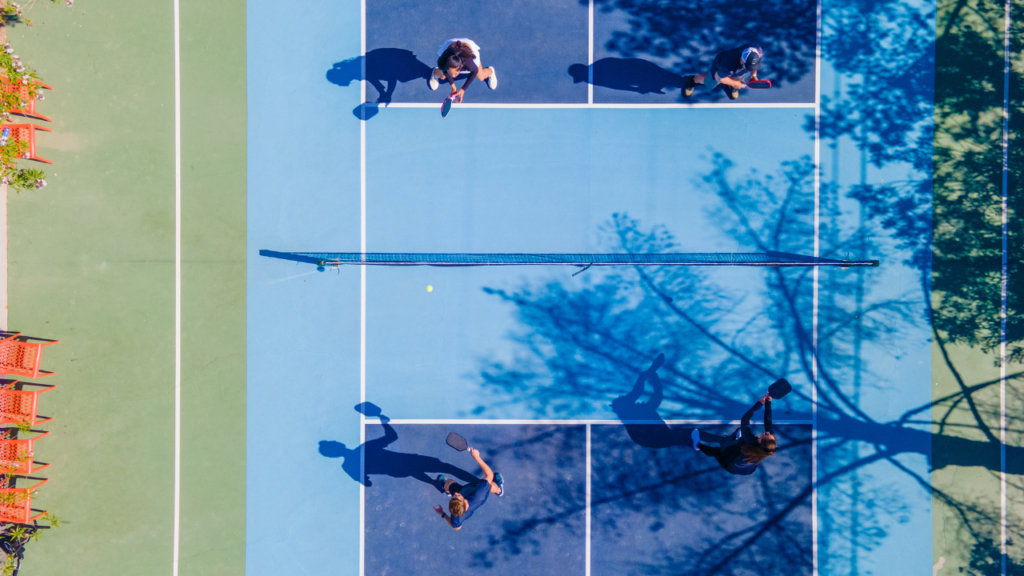
Opponent Analysis
Players often overlook the importance of analyzing their opponent’s weaknesses. Understanding what your rival struggles with can help you create a strong game plan. For instance, if an opponent has trouble with backhand shots, focus on targeting that area.
Adjusting tactics during matches is crucial. Players should not stick to one strategy. Instead, they must adapt based on how the game unfolds. This flexibility can lead to better performance and more wins.
Game Plan Development
A solid game plan includes both offensive and defensive strategies. Offense involves making aggressive plays to score points. Defense means being prepared to respond to your opponent’s actions.
Creating a balanced approach helps players stay in control. Focus on your strengths while also covering weaknesses. A good mix keeps opponents guessing and off-balance.
Staying Adaptable
Adaptability is key during matches. Players should be ready for unexpected plays from their rivals. If an opponent surprises you, quickly adjust your strategy.
Mindful practice can improve adaptability. Regular training helps players learn how to think on their feet. This skill is vital for maintaining the right balance between offense and defense.
Common Errors
Many players make common errors in their strategies. They may become too focused on offense and neglect defense. Others might stick to a routine that isn’t working. Both approaches can lead to mistakes.
Being aware of these oversights can help players avoid common pickleball mistakes. It’s important to remain alert and attentive throughout the match. This awareness can lead to better decision-making and improved results.
Importance of Basics
Mastering the basics is essential for effective strategy. Players should focus on fundamental skills like serving, volleying, and positioning. These skills form the foundation of a successful game plan.
Neglecting the basics can result in poor performance. Players should practice these skills regularly to build confidence and competence.
Solutions for Improvement
Finding solutions to strategy oversights requires reflection and practice. Players should analyze past games to identify mistakes. Discussing these errors with teammates or coaches can provide new insights.
Regular feedback helps players understand what works and what doesn’t. Incorporating this feedback into practice routines can lead to significant improvements over time.
Lack of Shot Variety
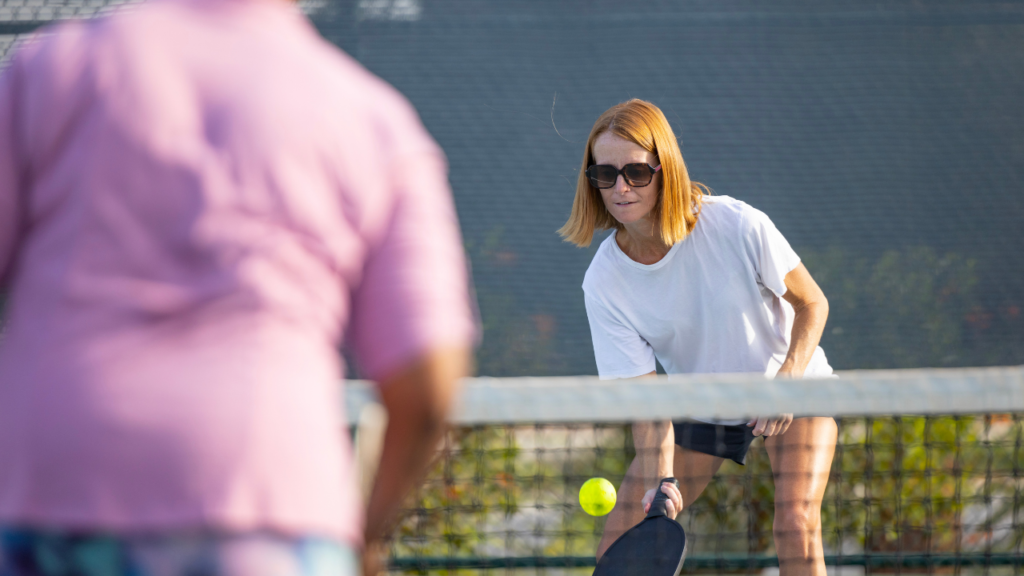
Diverse Shot Selection
Pickleball players often make a mistake by not using a diverse shot selection. Relying on just one type of shot makes it easier for opponents to predict your moves. To improve your game, include different types of shots like lobs, drop shots, and volleys. Each shot has its own purpose.
For example, lobs can push your opponent back. This gives you time to reposition yourself. Drop shots can catch your opponent off guard if they are too far from the net. Mixing these shots keeps your game interesting and hard to read.
Mixing Up Shots
Players should practice mixing up their shots during games. This helps keep opponents off balance. If you always use the same shot, it becomes predictable. Change the speed and angle of your shots regularly. One moment you can hit a fast drive, and the next, a soft drop shot.
Start by selecting one or two shots to practice each week. Focus on how they change the pace of the game. You might notice that your opponents struggle to respond when you vary your shots. Keeping them guessing is key in pickleball.
Assessing Court Situation
Assessing the court situation is crucial for making effective shot choices. Look at where your opponent is standing before hitting the ball. If they are close to the net, a lob may be more effective. If they are deep in the court, a drop shot could work better.
Understanding the court dynamics can lead to better decision-making. For instance, if your opponent is out of position, take advantage by placing a well-timed shot where they cannot reach it easily. Always think about what works best given the current situation.
Importance of Shot Repertoire
A strong shot repertoire allows players to adapt during matches. Players with limited shots often find themselves stuck in tough spots during games. Use drills to develop various shots consistently. Practice with friends or join local pickleball groups for more experience.
Also, watch professional players and learn from their strategies. Notice how they use different shots based on their opponents’ positions. This can inspire you to expand your own skill set.
Bad Court Positioning
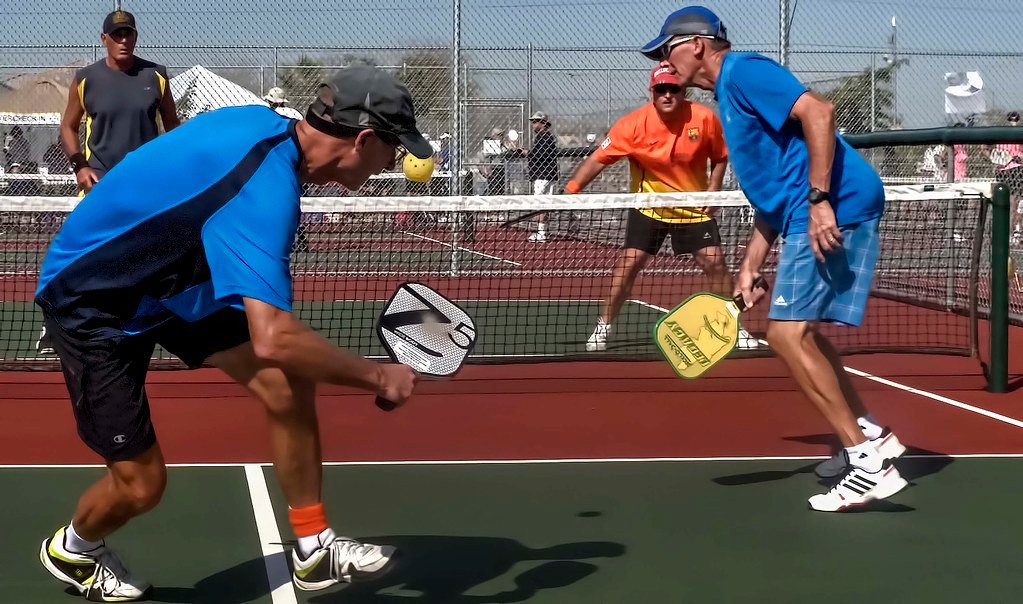
Court Coverage
Positioning is key in pickleball. Players must position themselves strategically to cover the court effectively. Good court positioning helps players respond to their opponent’s shots quickly.
Standing too close to the net can be a mistake. This makes it hard to react to high lobs. Instead, players should find a balance between the net and the baseline. A comfortable playing distance allows for better movement and shot selection.
Responding to Shots
Adjust your position based on your opponent’s shots. If they hit a deep shot, move back toward the baseline. This gives you more time to react and set up for your return.
In contrast, if your opponent hits a short ball, step forward. This positioning error can lead to missed opportunities. Players often forget that the game is dynamic. Staying aware of your opponent’s movements is crucial.
Common Errors
Many players make classic mistakes with their body position. For example, standing flat-footed limits movement options. Players should stay light on their feet and ready to move in any direction.
Another common error is not adjusting after each shot. After hitting, players should reposition quickly for the next play. Failing to do this can leave them vulnerable to an attack from their opponent.
Importance of Baseline Play
Players often overlook the importance of strong baseline play. The baseline is where many rallies start and end. Being too far back can limit your ability to attack effectively.
On the other hand, being too close can lead to easy returns from opponents. Finding the right spot near the baseline is important for both defense and offense.
High Lobs Strategy
High lobs are a common tactic in pickleball. Opponents use them to push players back from the net. Anticipating these shots requires good court positioning.
When expecting a lob, prepare by moving back slightly. This allows for a better chance to return the shot with power. It also helps avoid being caught off guard.
Skipping Warm-Up and Cool Down
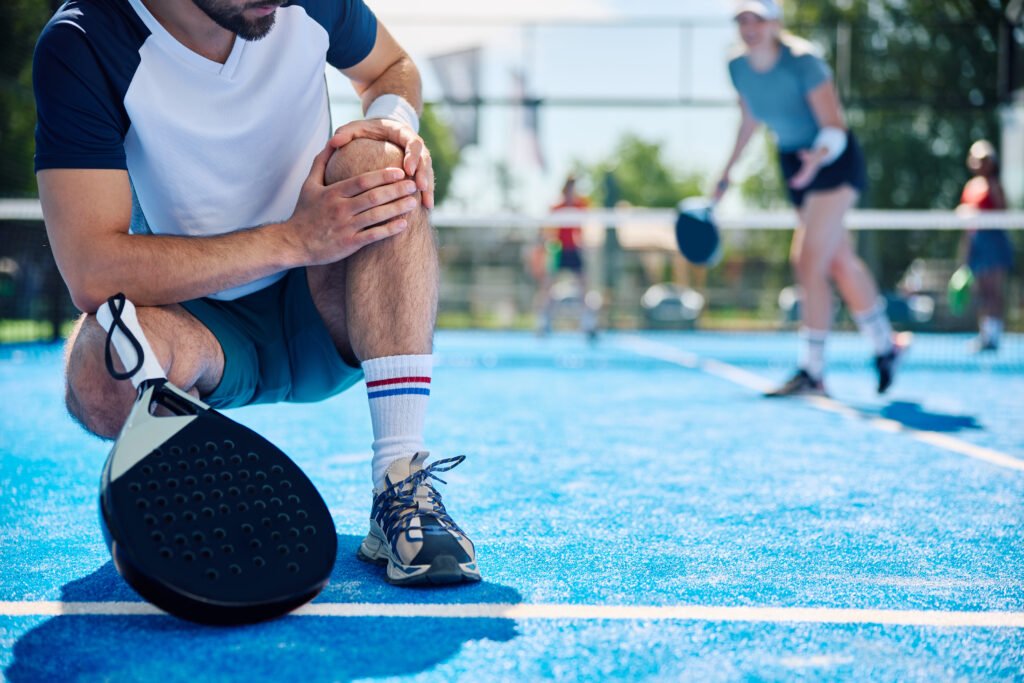
Importance of Warm-Up
Players often skip their warm-up before a game. This mistake can lead to injuries. A good warm-up routine prepares the body for action. It gets the heart rate up and helps muscles to loosen.
Dynamic stretches are important during warm-up. These stretches help increase blood flow to the muscles. They improve flexibility and range of motion. For example, players can do arm circles or leg swings. These movements get the body ready for quick sprints on the court.
A proper warm-up should last about 10-15 minutes. This time allows players to sweat and feel ready. Failing to take this time can result in muscle strains or sprains.
Benefits of Cool Down
Many players forget about cool-down after playing. This is another common mistake. A proper cool down helps the body recover after intense activity. It reduces soreness and improves flexibility.
Cooling down should include static stretching. This type of stretching helps relax the muscles after exercise. Players can hold each stretch for 15-30 seconds. Stretches like hamstring or shoulder stretches are effective.
Breathing is also important during cool down. Taking deep breaths helps lower the heart rate gradually. This practice gives a sense of control over the body’s recovery process.
Time for Recovery
Players need to give their bodies time to recover. Skipping this step can affect performance in future games. Recovery time allows muscles to repair and grow stronger.
After a match, players should spend at least 5-10 minutes cooling down. This practice aids in preventing stiffness and fatigue. It also helps maintain flexibility, which is crucial for pickleball.
Creating a routine for warm-ups and cool downs benefits everyone. Players can practice these routines regularly to build good habits.
Mindful Practices
Being mindful of warm-up and cool-down routines is key. Players should focus on how their bodies feel during these times. Listening to the body can prevent injuries and enhance performance.
Incorporating both practices into every game makes a difference. Players will notice improved control on the court with better preparation and recovery.
Final Remarks
Avoiding common pickleball mistakes can elevate your game. Focus on footwork, serving, and court positioning to play smarter. Don’t forget to communicate with your partner and mix up your shots. Each aspect plays a role in your success on the court.
Master these tips for a better experience. You’ll enjoy the game more and win more matches. So, get out there, practice, and watch your skills grow. Let’s hit the courts and play like pros!
Frequently Asked Questions (FAQ)
Incorrect footwork involves poor positioning and movement on the court. It can lead to missed shots and increased fatigue. Focus on staying light on your feet and moving quickly to the ball for better performance.
To enhance your serve, practice proper grip, stance, and follow-through. Aim for consistency over power. A well-placed serve can give you a strategic advantage in the game.
The no-volley zone prevents players from smashing volleys too close to the net. Neglecting it can lead to faults and lost points. Understanding this area is crucial for effective gameplay.
Overusing power can result in less control and accuracy. Instead, focus on placement and spin. This approach increases your chances of winning rallies.
Establish clear signals and roles with your partner. Regularly discuss strategies during practice. Effective communication enhances teamwork and reduces confusion during matches.
Good court positioning maximizes your reach and shot options. Stay near the center when possible, allowing quick movement to either side. This positioning helps maintain control during play.
Skipping these routines increases injury risk and decreases performance. Warming up prepares your muscles, while cooling down aids recovery. Prioritize both for long-term success in pickleball.

